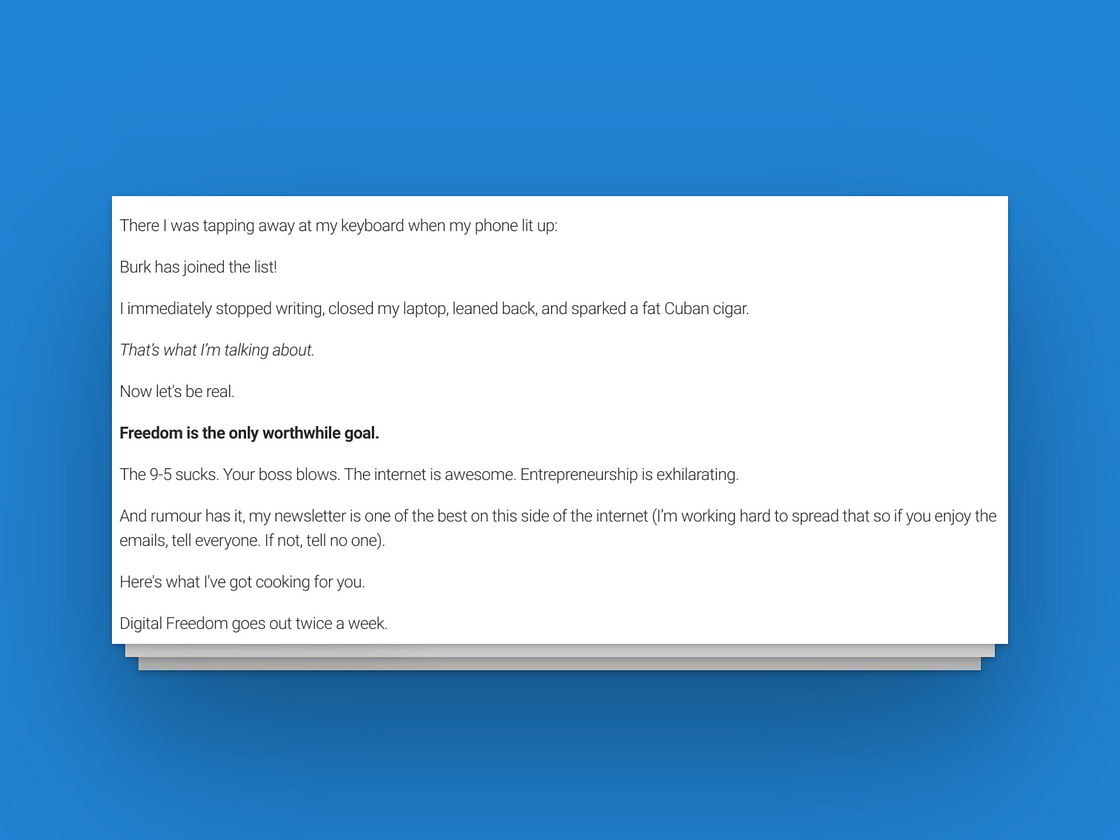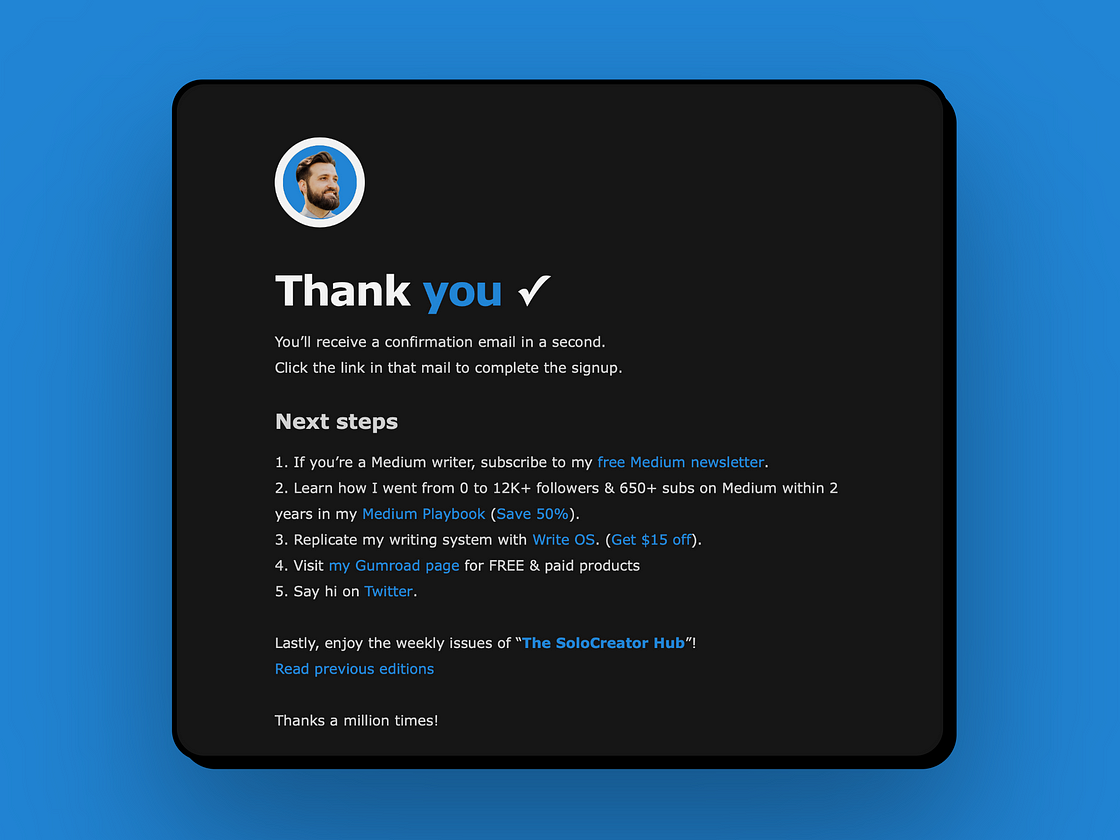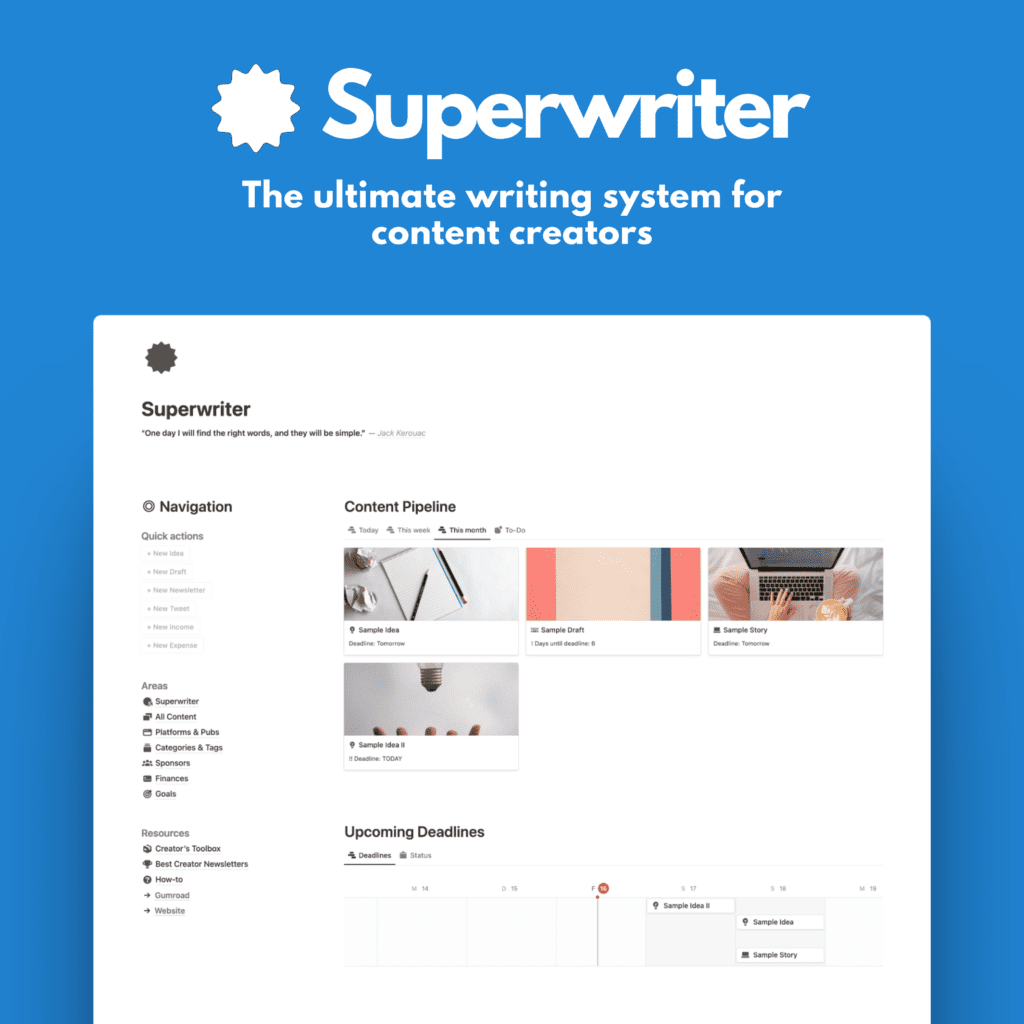2023 is the year of newsletters.
Justin Welsh grew his weekly email blast to 85K+ subscribers in a year and now earns $4000 per weekly issue from sponsors.
This is just one example of the power of free newsletters.
Here are my top tips for newsletter beginners.
#1 Think, but don’t overthink
The platform for your future newsletter is important. Think a moment before deciding on the best provider for your issues. But don’t overthink it. You can change later. That’s the beauty of building an email list. It’s yours. You can take it with you.
These are the questions to ask when figuring out the perfect newsletter provider for you:
1. Is it a newsletter or do you need email marketing and automation?
This is crucial as it will narrow down the provider list significantly.
If the answer is newsletter only, then don’t overcomplicate the process and just sign up for Substack.
- It’s the easiest, most robust, feature-rich, and beginner-friendly platform with a built-in audience booster via discover and recommendations. No other free platform platform will beat that. Oh yea, and it’s free. Did I mention that?
- The only other platform I’d consider is Beehiiv. It’s a hybrid between Substack and an email automation tool.
If the answer is email automation, you have to look at other options than Substack. Substack doesn’t offer any automation.
- The first provider I’d start looking at for automation is EmailOctopus which comes with a generous free plan and very affordable paid plans. It doesn’t offer as much functionality as the next one on the list, but it’s a great beginner platform.
- If you don’t mind paying a little more, go with ConvertKit. It’s, in my opinion, the most complete, robust, and growth-oriented platform out there. And it will only get better with the introduction of the creator network soon.
- Others to consider: MailerLite, MailChimp
If you don’t know the answer to the first question yet, I’d start for free with Substack and move on to paid email automation later.
2. Do you need integrations?
I’m talking about direct app integrations with other platforms and services like Gumroad, WordPress, social media, etc.
If yes, go with ConvertKit.
If no, go with Substack.
3. Do you need (multiple) forms and landing pages?
Unless you already have a website with signup form, you will need one in the future. A signup page is the landing page that people visit to sign up for your email list. This landing page can be your Substack welcome page (the default option, you can’t change it), a custom landing page you create inside your email service provider, or just a form (usually JavaScript, HTML code, or a plugin for WordPress, Squarespace, etc.) that you can insert into an existing website.
If you need multiple landing pages or forms, you have to look at EmailOctopus, ConvertKit, Beehiiv, and other email marketing and automation providers. You can customize the look and feel of each form and landing page to your liking.
If a simple signup page is enough, you can go with Substack. Sidenote: I don’t recommend Substack’s embedded signup form. It’s a clunky iframe that can’t be customized.
#2 Lost frequencies
A crucial factor for newsletter success is the frequency and timing of the issues. While you can always change both later on, it helps to think about those beforehand.
Realistically, how often are you able and willing to publish a newsletter issue?
Before you answer, consider these additional questions:
- How long will your newsletter issues typically be?
- Will you write original content or re-purpose existing material?
- What’s the type of your newsletter? A story per issue, a curated list of stories, a curated list of content from you and others, sponsors, or additional sections?
Now, answer those questions! Then, I have a rule of thumb to help you:
The shorter the content, the more issues per month.
If your newsletter issue comes in short form (a few paragraphs), you can publish daily or multiple times per week.
If you write an essay of 3000 words each time, you probably shouldn’t send a daily email blast.
Remember, it’s a rule of thumb. Exceptions are part of the rule.
If you’re planning on re-purposing content, you can publish more frequently because the effort will be lower. On the other hand, if you’re eager to create unique content for each issue, be truly realistic about how often you will be able to come up with that content and how long it’ll take you to finish it. Weekly is a great choice, every two weeks is good. I subscribe to monthly newsletters as well. It’s all possible. I wouldn’t go less than monthly, unless you run an event-based newsletter, meaning you only send issues when something happens, like a new product release.
If your idea is a curation newsletter, consider the time it takes to curate the content. Then decide on the frequency.
Short = daily, medium = weekly, long = every 2 weeks/monthly.
#3 Start with a bang
Starting can be the hardest part. But if you went over the aforementioned questions, you should be ready to start. So, go for it!
Start with a bang, though. The bang is referring to the welcome mail of your newsletter.
Many people underestimate the importance of a great welcome mail. I did. And to be honest, I still haven’t figured it out yet. It’s a process.
The first step is being aware of the importance of the welcome mail. After all, it will be the first thing your subscribers are going to read.
The greatest welcome email I have ever read is by Kieran Drew and his newsletter Digital Freedom. You should read that one. Here’s a preview:

Thank you and yes, please
Two other pages you could improve are the “thank you” page and the “confirmation” page, in case your newsletter platform offers them. Most email automation platforms like ConvertKit and EmailOctopus do.
The “thank you” page is the popup or page you see after you put your email in and hit subscribe. ConvertKit shares simple message per default, but offers the option to redirect to a dedicated “thank you” page in the settings. That “thank you” page can be any site you want and it can contain a lot more than a simple “thank you for subscribing”. You could show a few additional resources, share links, offer some deals on products, and much more. Here’s mine:

The same goes for the “confirmation” page. That’s the page that opens up after a double opt-in mail, if your newsletter platform supports such. Most do. Per default, a short page with a quick “you’re subscription is confirmed” pops up. But again, you can put a lot of value here as well. You could use a similar one to your “thank you” page or something entirely different.
Jay Clouse, for example, redirects to a page with a video message and some links and offers.
In any case, it’s worth thinking about these pages because each subscriber will inevitably visit them.
The bottom line
You’ve laid the foundation.
From then on, it’s you and your newsletter issues. Keep them coming. Try to be as consistent as possible, improve with every issue, get some feedback, and enjoy the process.
Do it for the long run. You might end up with thousands of subscribers and thousands of dollars worth of sponsor spots each month.
Newsletters will be huge in 2023. Be part of it!








